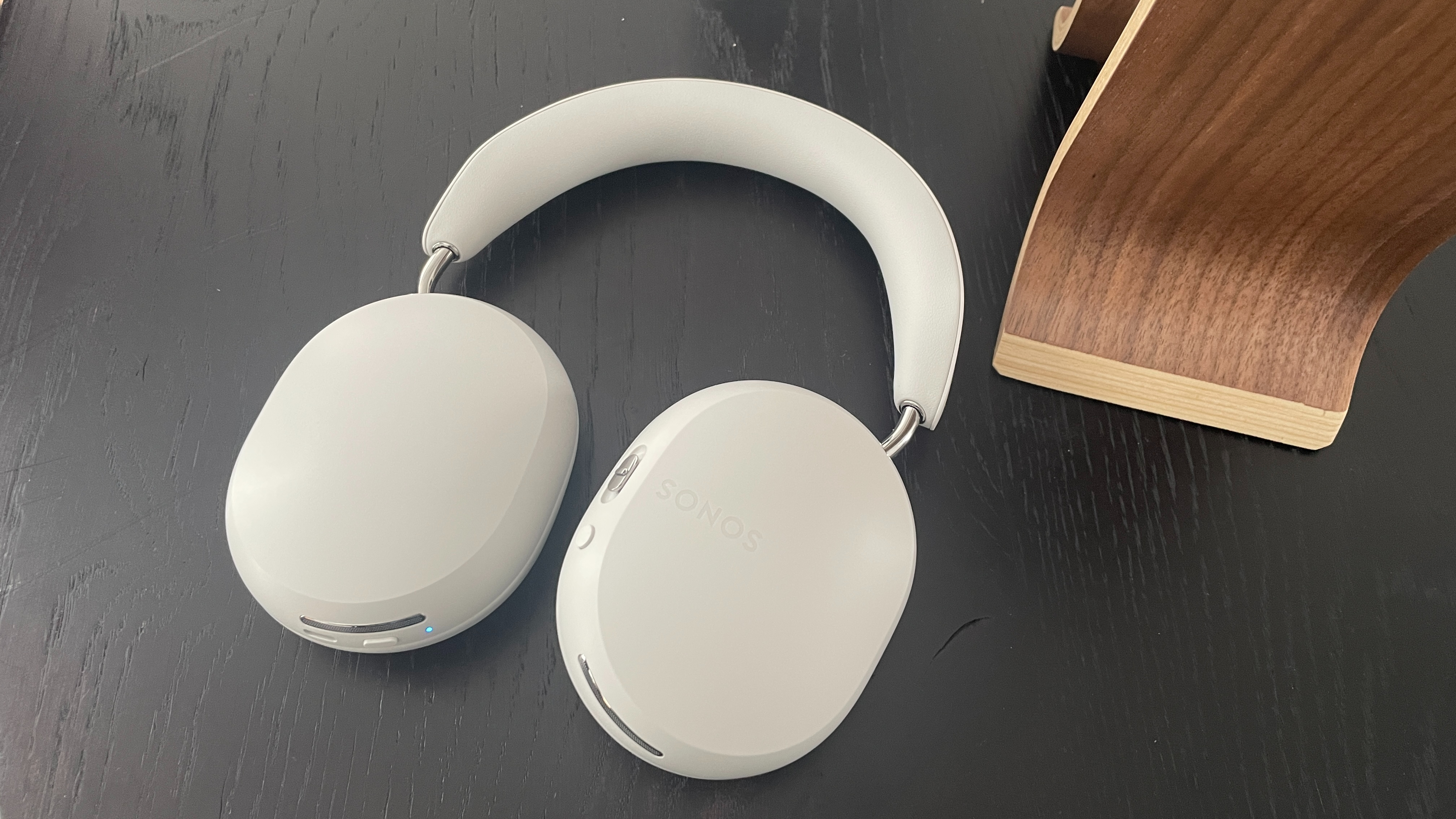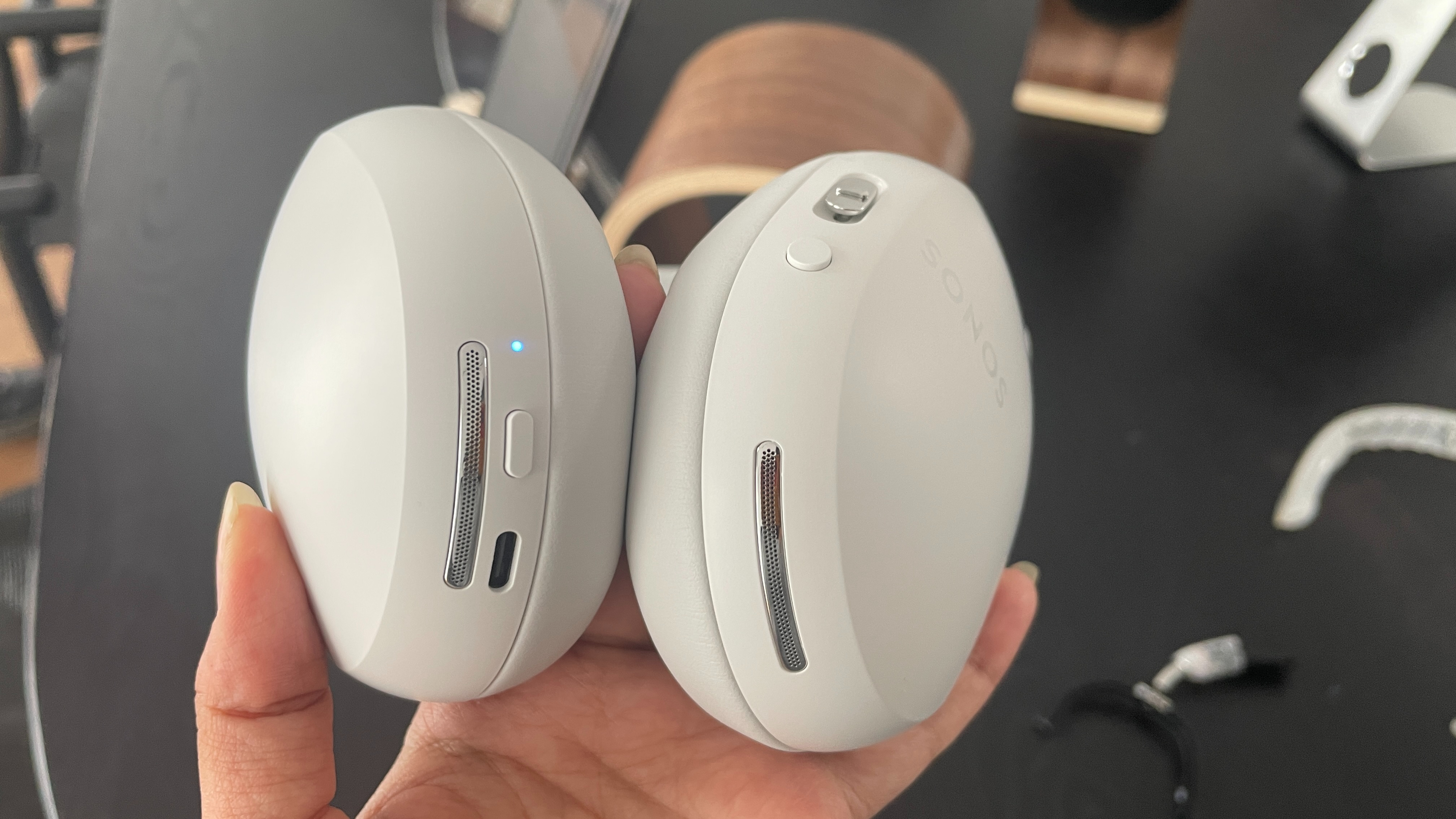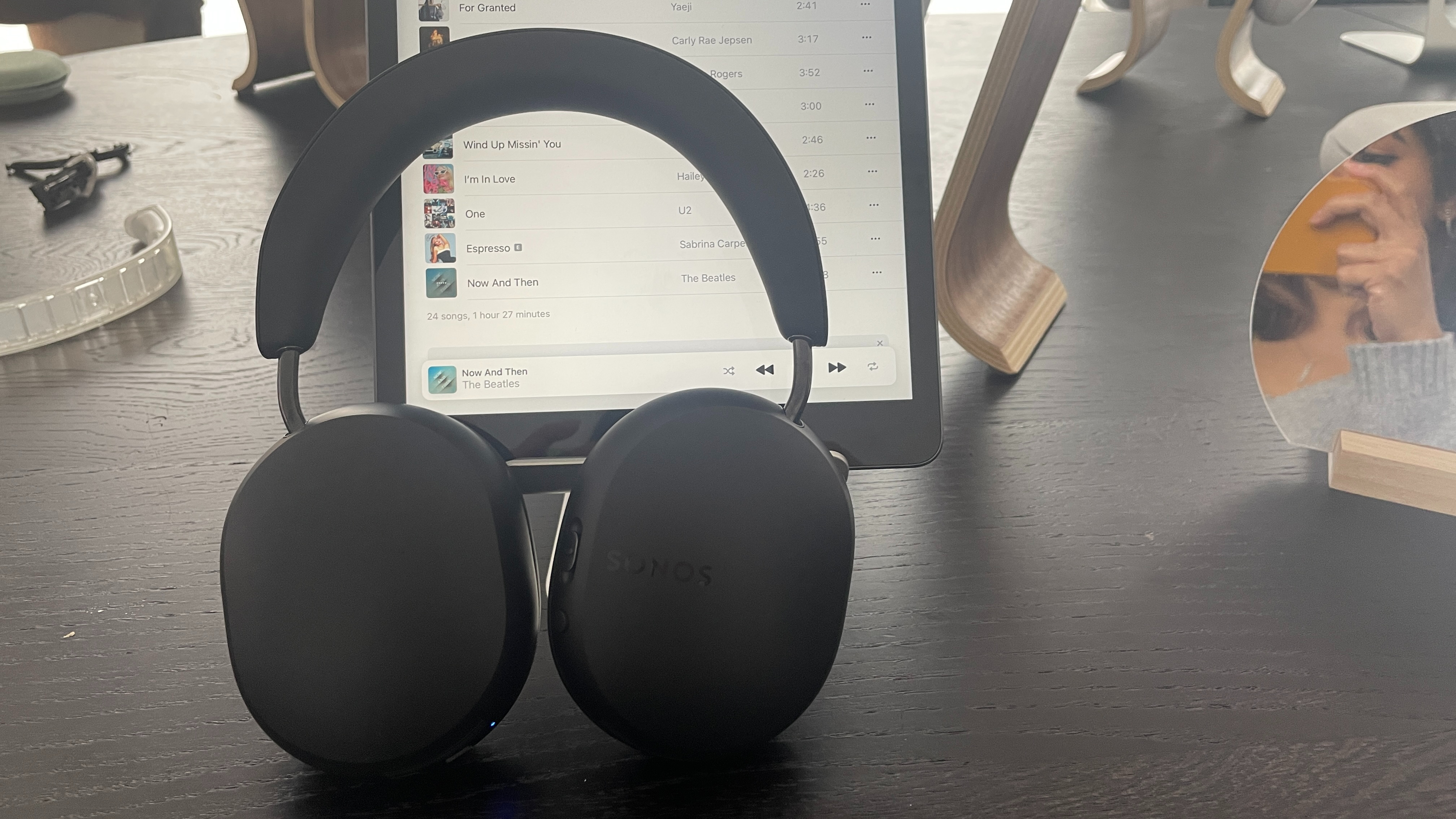
Ace – that’s not only what Sonos’s just-announced wireless headphones are called but also how good they appear to be. Should their closest rivals, namely the Sony WH-1000XM5, Bose QuietComfort Ultra Headphones and Apple AirPods Max, be worried? They'd be silly not to be.
The Ace share much in common with one or more of their rivals, such as spatial audio with head tracking technology, like the AirPods and Bose, and a similar premium price tag to them too (£449 / $449 / AU$699). There’s Bluetooth multipoint support for connecting two devices simultaneously, as with the Sony and Bose, and physical (as opposed to touch) controls, also found on the AirPods. As with all three rivals, the Ace offer real-time ANC adjustment based on surroundings, the increasingly universal companion app for settings adjustments, and replaceable earpads.
It’s too early to tell how the Ace perform in the sound and noise-cancelling departments compared to their peers (watch this space), but based on the specifications and our initial impressions from our brief time with them already, as detailed in our hands-on Sonos Ace review, we can see where they already gain on their rivals – and where they comparatively fall short.
So let's start with their trump cards...
1. Better Bluetooth support
There are two ways Bluetooth quality can be measured (theoretically at least): in standards/specifications and codecs. The Ace support one of the latest and greatest in both respects, supporting Bluetooth 5.4 (specification) and aptX Lossless (codec).
In comparison, the Bose support 5.3 and aptX Adaptive, the Sony 5.2 and LDAC, and the AirPods 5.0 and AAC.
OK, so admittedly 5.4 doesn’t bring too many practical benefits over previous variants in the 5.0 standard, sticking with the all-important speed (2Mbps) and range (800-feet) figures; but it offers improvements in security, energy efficiency and stability.
The real ace in the hole, however, is in the codec department. aptX Lossless is technically superior to the aforementioned codecs supported by the Ace's rivals, able to passthrough lossless CD-quality audio at its peak due to having greater bandwidth than the ‘next-best’ LDAC and aptX Adaptive. AAC is pretty low down on the list. (You can get to know your aptX from your AAC in our handy Bluetooth codec explainer, if you’re interested.) That said, aptX Lossless isn’t supported by many phones or other audio devices (yet), so for now the advantage of supporting it over aptX Adaptive and LDAC is fairly moot.
Despite the Bluetooth specification and codec wins here, we’re a little surprised the Ace don’t support Bluetooth LE (Low Energy) Audio, the very latest version of Bluetooth technology that promises more power-efficient, higher-quality audio compared to the Classic Audio version we've had for years, because two years ago the company bought a Kentucky-based startup company that specialised in implementing it. Perhaps Sonos is saving that for its next pair.
2. Enable USB-C listening
The Bose and Sony both have USB-C sockets – but only for charging; they offer wired listening via their analogue ports, nowadays most typically to phones via 3.5mm-to-USB-C dongles.
The Ace’s USB-C socket, however, is for charging and wired listening, allowing for lossless digital audio transmission through the USB-C-to-USB-C cable between them and your audio source. That leaves the Sonos Ace to do all the digital-to-analogue conversion rather than the connected phone or dongle – which should offer an improvement as it’s potentially of higher quality and less prone to noise interference down the cable.

3. Unique soundbar integration
The Ace were rumoured to support wi-fi (in addition to Bluetooth) playback, which didn’t transpire. But they do have a wi-fi chip inside them to facilitate unique integration with the company’s Arc soundbar.
Rolling out later this year, Sonos’s TrueCinema calibration is similar to TruePlay on Sonos speakers, using new software to tailor the Ace’s acoustics to your room when watching Dolby Atmos (or upmixed stereo to 7.1.4 channels) soundtracks via a Sonos Arc and TV system, in a bid to deliver a more immersive experience so that it sounds like you're not wearing headphones.
Secondly, there’s the Swap feature, which is available at launch and lets you beam the sound from your Arc (other Sonos soundbars will be supported later) to the headphones with one button press, and vice versa.
4. Stellar battery life
OK so the Sonos Ace technically match the Sonys for battery life, offering 30 hours (with ANC and Bluetooth on) as well as three hours of playback from a three-minute charge. But the figures are far enough ahead of the AirPods (20 hours) and Bose (24 hours) that we think they’re worth highlighting here.
Sonos hasn’t published battery-life claims for when those modes are turned off, so we look forward to seeing how they fare against the Sony’s claimed 40 hours with ANC off.
Regardless, the Ace and Sonys are still some way off the class leaders – the Sennheiser Momentum 4 Wireless offer 60 hours.

But, they're heavy...
Both of the ways in which the Ace potentially fall behind at least one of their closest rivals concern design. We actually like the Ace’s sleek, slimline aesthetic and found them comfortable during our brief demo time, but what will comfort levels be like over an extended period? Only proper time in their company will tell, but the Ace’s 312g weight suggests that the headband padding has its work cut out.
While they’re lighter than the 385g AirPods, they’re significantly heavier than Bose (253g) and Sony (250g).
... and don't fold
While the earcups of the Ace and its rivals all fold flat, allowing them to sit comfortably on your collarbone when worn around the neck and fold neatly into a carry case, the Bose stick with a design element that has sadly perished from headphones in recent years: the ability to fold up. The folding inward hinge has presumably fallen from favour due to the complexity of a hinge mechanism (it’s just another thing that can break) and an overwhelming preference for clean designs, but it’s handy for curling up headphones into a pocket and ultimately something we wish the Ace had.
A minor shortcoming worth only a small mention is that the Ace offer only two ‘colours’ – black or soft white – compared to the Sony’s and Bose’s three and the AirPods’ five.
MORE:
We detail our first impressions in our Sonos Ace hands-on review
Everything you need to know about the Sonos Ace headphones
Sonos Ace vs AirPods Max: how the two rivals stack up
Sonos Ace vs Sony WH-1000XM5: are the Ace worth the premium?







